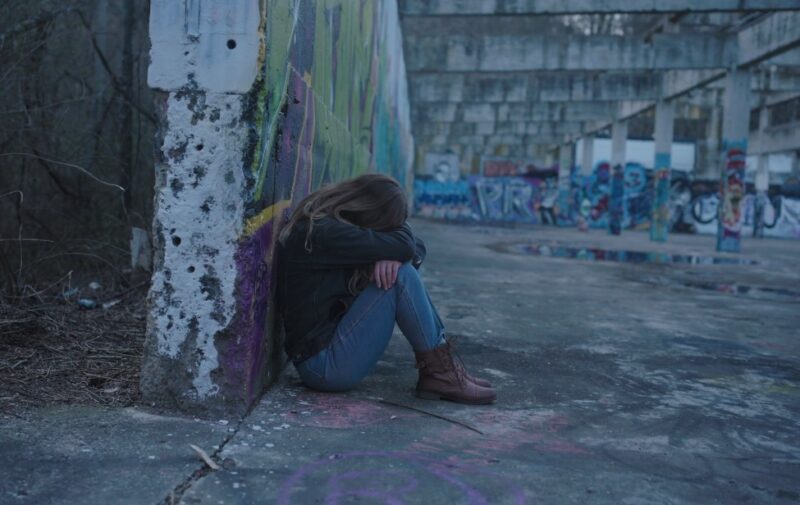Growing up in a Vietnamese family and moving to London at the age of 17, I’ve experienced firsthand how the past can shape our present in ways we often don’t recognize. Our childhood, a time meant for playful memories and life lessons, can sometimes be marred by experiences that leave deep scars.
Some of us, in a bid to protect ourselves, might even forget these traumatic memories. This is the intricate dance between childhood trauma and memory loss.
It’s a journey I’m passionate about understanding, not just for myself, but for my newly adopted son, Lamar, and many others who might be silently bearing the weight of their past.
What Constitutes Distress?

Childhood trauma refers to distressing experiences that occur during one’s formative years. These can include:
- Physical, emotional, or sexual abuse
- Neglect or abandonment
- Witnessing violence or severe discord at home
- Natural disasters or accidents
- Loss of a loved one
- The Prevalence of Childhood Trauma
Such events can have lasting psychological and physiological impacts, often affecting memory and cognitive function. According to the Centers for Disease Control and Prevention (CDC), a significant number of children in the U.S. experience some form of trauma.
This underscores the importance of understanding its long-term effects.
Different Types of Distress
| Type of Trauma | Description | Effects on Developing Brain |
|---|---|---|
| Acute | Results from a single event, often intense and sudden. Examples include accidents, natural disasters, or assaults. | May cause short-term memory disturbances and emotional distress. |
| Chronic | Repetitive and prolonged exposure to traumatic events, such as ongoing abuse, neglect, or domestic violence. | Can lead to long-lasting changes in brain structure, affecting memory, emotional regulation, and behavior. |
| Complex | Arises from multiple traumatic events, often of varying nature, and is pervasive and enduring. | Constant stress and fear can disrupt neural pathways, impacting memory recall, and cognitive function. |
Memory Loss: A Defense Mechanism?

Memory loss, especially concerning traumatic events, can be the brain’s way of protecting itself. By forgetting distressing experiences, the mind attempts to shield itself from further emotional pain. However, this coping mechanism can have long-term consequences.
Dissociative Amnesia
One of the most direct links between distress and memory loss is dissociative amnesia. This condition involves an inability to recall specific information, usually about traumatic or stressful events. It’s as if the brain “blocks out” these memories to protect the individual from the pain associated with them.
Dissociative amnesia can be temporary or long-lasting. Some individuals might suddenly recall forgotten memories, often triggered by specific events or stimuli. Others might never remember the traumatic event, leaving a gap in their personal history.
Repressed Memories
Repressed memories are another phenomenon where traumatic memories are pushed out of conscious awareness. While there’s debate among professionals about the validity of repressed memories, many believe that the brain can hide away distressing memories as a defense mechanism.
However, these memories can sometimes resurface later in life, often during therapy or after encountering a triggering event. The sudden recall of these memories can be distressing, leading to emotional turmoil and confusion.
The Neurobiology of Distress and Memory

The brain is a complex organ, and its response to distress can be multifaceted. Understanding the neurobiology behind trauma and memory loss can shed light on why some individuals forget traumatic events and how they can potentially recover those memories.
The Role of Stress Hormones
When faced with a traumatic event, the body releases stress hormones like cortisol. While these hormones are essential for responding to immediate threats, chronic exposure can damage the hippocampus, a region of the brain crucial for memory formation and retrieval.
Over time, high levels of cortisol can lead to neuron damage and even inhibit the birth of new neurons. This can result in difficulties in forming new memories or recalling old ones, especially those related to the traumatic event.
Neuroplasticity and Healing
The brain’s ability to reorganize itself, known as neuroplasticity, offers hope for those affected by trauma-induced memory loss. With the right interventions, the brain can form new neural connections, helping to restore lost memories and improve cognitive function.
Engaging in activities that promote neuroplasticity, such as mindfulness meditation, cognitive exercises, and even certain medications, can aid in the healing process. Over time, these practices can help rewire the brain, mitigating the effects of trauma.
Impact on Daily Life

Memory loss stemming from childhood distress isn’t just about forgetting the traumatic event itself. It can have ripple effects, influencing various aspects of an individual’s daily life, from interpersonal relationships to professional endeavors.
Challenges in Relationships
Memory loss and the associated emotional baggage can strain relationships. Individuals might struggle with trust issues, fearing that opening up about their past will lead to rejection or misunderstanding.
They might also experience mood swings or emotional outbursts, making it challenging to maintain stable relationships. Understanding and patience from partners, friends, and family can make a world of difference.
Open communication and seeking therapy, both individually and as a couple or family, can help navigate these challenges.
Professional Implications
Trauma-induced memory loss can also impact one’s professional life. Difficulty concentrating, challenges in decision-making, or even gaps in skill-related memories can hinder career progression.
Moreover, the emotional toll of distress can lead to absenteeism or decreased productivity. It’s essential for employers to foster a supportive work environment. Accommodations, such as flexible work hours or mental health days, can help affected individuals manage their symptoms and thrive professionally.
Healing and Recovery

While the effects of childhood distress on memory can be daunting, there’s hope for healing and recovery. With the right support and therapeutic interventions, individuals can reclaim their memories and move forward.
Therapeutic Approaches
Various therapeutic approaches can help individuals process trauma and address memory loss.
| Therapeutic Approach | Description |
|---|---|
| Cognitive-Behavioral Therapy (CBT) | CBT helps individuals recognize and change negative thought patterns related to their trauma. |
| Eye Movement Desensitization and Reprocessing (EMDR) | EMDR is a method designed to help individuals process traumatic memories. |
Both therapies aim to help the individual confront and reprocess traumatic memories in a safe environment, allowing them to integrate these memories and reduce their emotional charge.
The Role of Support
Support from loved ones and professionals is crucial for healing. By providing a safe space for the individual to share their experiences and feelings, they can begin to process their distress. The assistance of expert in this case is essential like it would be for any other condition, whether it is a dust allergy, serious physical illness, or a mental issue.
Support groups, where individuals can connect with others who’ve had similar experiences, can also be beneficial. Healing is a journey, and everyone’s path is unique.
With patience, understanding, and the right resources, individuals can overcome the challenges posed by childhood trauma and memory loss.
Prevention and Early Intervention

While we can’t always prevent traumatic events, especially in childhood, early intervention can mitigate the long-term effects on memory and overall well-being.
Recognizing the Signs
Early signs of trauma in children might include changes in behavior, regression in previously mastered skills, sleep disturbances, or unexplained fears. Recognizing these signs and seeking help promptly can prevent more severe psychological effects later on.
Parents, teachers, and caregivers play a pivotal role in this. Being observant and creating an environment where the child feels safe to express their feelings is crucial.
The Importance of Safe Spaces
Creating safe spaces, both physically and emotionally, can help children process traumatic events. This might mean ensuring a stable home environment, providing counseling, or connecting with support groups that cater to specific traumas.
Early intervention and providing a nurturing environment can significantly reduce the risk of long-term memory loss and other trauma-related complications.
FAQs
What other physical responses, apart from memory loss, can result from childhood distress?
This can lead to a range of physical responses such as chronic fatigue, unexplained aches and pains, sleep disturbances, heightened startle response, and even changes in eating patterns.
These manifestations are often the body’s way of reacting to prolonged stress or traumatic events.
Is there a specific age range during which children are most susceptible to the effects of trauma on memory?
While distress can affect individuals of all ages, early childhood (particularly ages 3 to 6) is often considered a critical period because the brain is undergoing rapid development.
Traumatic experiences during this time can have more pronounced effects on memory and cognitive function. However, its impact can vary based on the individual’s resilience, support system, and the nature of the trauma.
Are there certain types of trauma that are more likely to cause memory loss than others?
All types of distress can potentially lead to memory disturbances. However, chronic and complex traumas, which involve prolonged or multiple exposures to stressful events, tend to have a more significant impact on memory loss due to their enduring and pervasive nature.
Can art or creative therapies help in addressing trauma-induced memory loss?
Yes, art and creative therapies, like art therapy, music therapy, and dance/movement therapy, can be beneficial. These therapies offer a non-verbal medium for individuals to express and process their emotions, which can sometimes help in unlocking repressed or forgotten memories.
How can educators play a role in supporting children who may be experiencing distress?
Educators can play a pivotal role by creating a safe and understanding classroom environment.
They can be observant of any behavioral changes, encourage open communication, provide additional support or resources, and liaise with caregivers or professionals when they suspect a child might be dealing with trauma.
Educator training in trauma-informed care can further enhance their ability to support affected students.
Summary
In our quest to heal and move forward, it’s essential to recognize and confront the traumas of our past. Memory loss might serve as a temporary shield, but true healing comes from acknowledging, understanding, and addressing these deep-seated emotions.
We all have the power to reclaim our narratives and write a brighter, more hopeful chapter for our future.

